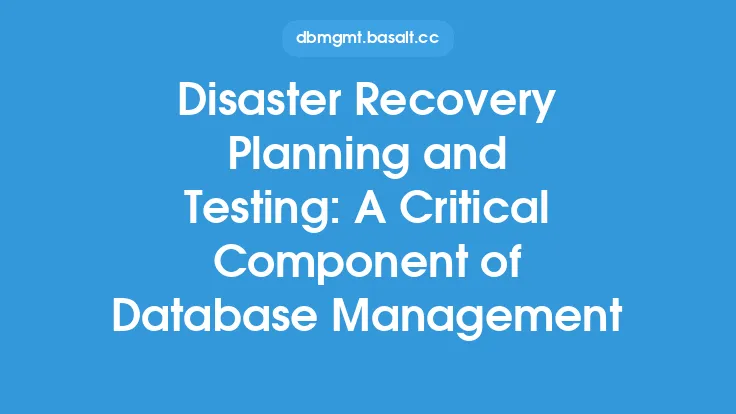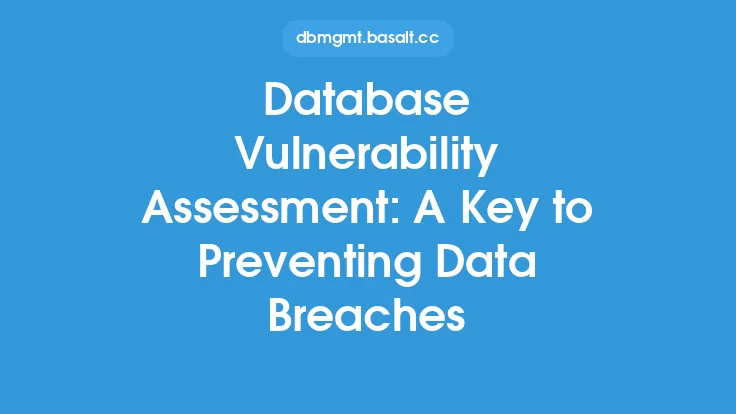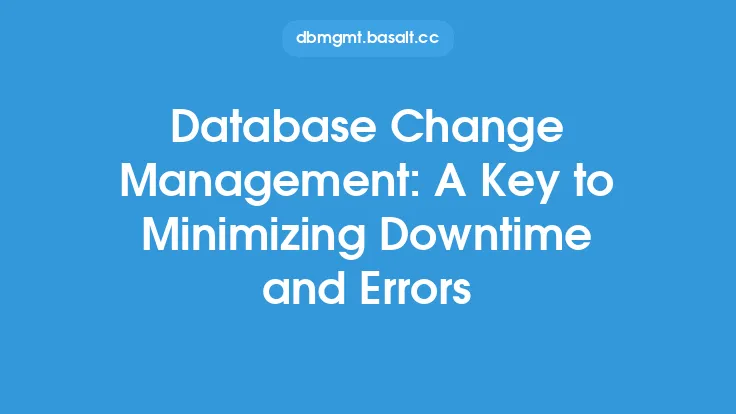When it comes to database management, one of the most critical aspects is ensuring that data is properly backed up and can be restored in case of an emergency. Data restoration planning is a crucial step in this process, as it enables database administrators to quickly and effectively recover data in the event of a disaster or system failure. A well-planned data restoration strategy can mean the difference between minimal downtime and significant data loss, making it essential for businesses that rely heavily on their databases.
Introduction to Data Restoration Planning
Data restoration planning involves creating a comprehensive plan for recovering data in the event of a disaster or system failure. This plan should include procedures for restoring data from backups, as well as strategies for minimizing downtime and ensuring business continuity. A good data restoration plan should be tailored to the specific needs of the organization, taking into account factors such as the type and amount of data, the frequency of backups, and the resources available for restoration.
Key Components of a Data Restoration Plan
A data restoration plan should include several key components, including:
- A detailed inventory of all data assets, including databases, files, and other critical data
- A backup strategy that includes regular backups, as well as procedures for storing and managing backup media
- A restoration procedure that outlines the steps to be taken in the event of a disaster or system failure
- A plan for testing and validating backups to ensure that they are complete and accurate
- A strategy for minimizing downtime and ensuring business continuity, including procedures for alternative processing and communication
Best Practices for Data Restoration Planning
There are several best practices that database administrators can follow to ensure that their data restoration plan is effective. These include:
- Regularly reviewing and updating the plan to ensure that it remains relevant and effective
- Testing the plan regularly to ensure that it works as expected
- Ensuring that all personnel are trained on the plan and understand their roles and responsibilities
- Using automated tools and scripts to simplify the restoration process and reduce the risk of human error
- Considering the use of cloud-based backup and restoration services to provide an additional layer of protection and flexibility
Technical Considerations for Data Restoration
From a technical perspective, data restoration planning involves several key considerations. These include:
- The type and format of the backup media, such as tape, disk, or cloud-based storage
- The backup software and tools used to create and manage backups
- The database management system and other software used to store and manage data
- The network and system infrastructure, including servers, storage, and connectivity
- The security and access controls in place to protect data and prevent unauthorized access
Data Restoration Planning for Different Database Management Systems
Different database management systems (DBMS) have different requirements and considerations when it comes to data restoration planning. For example:
- Oracle databases require a comprehensive backup and recovery strategy that includes regular backups, as well as procedures for restoring data from backups.
- Microsoft SQL Server databases require a similar approach, with a focus on using the built-in backup and recovery tools to simplify the process.
- MySQL databases require a more customized approach, with a focus on using third-party tools and scripts to manage backups and restoration.
Common Challenges and Pitfalls in Data Restoration Planning
Despite the importance of data restoration planning, many organizations face challenges and pitfalls when implementing a plan. These include:
- Insufficient resources and budget to support a comprehensive data restoration plan
- Lack of expertise and training among personnel responsible for data restoration
- Inadequate testing and validation of backups, leading to incomplete or inaccurate data
- Failure to consider alternative processing and communication strategies in the event of a disaster or system failure
- Inadequate security and access controls, leaving data vulnerable to unauthorized access or theft.
Conclusion
In conclusion, data restoration planning is a critical aspect of database management that requires careful consideration and planning. By following best practices, considering technical requirements, and tailoring the plan to the specific needs of the organization, database administrators can ensure that their data is properly backed up and can be restored quickly and effectively in the event of a disaster or system failure. Regular testing and validation, as well as ongoing review and update of the plan, are essential to ensuring that the plan remains relevant and effective over time.





